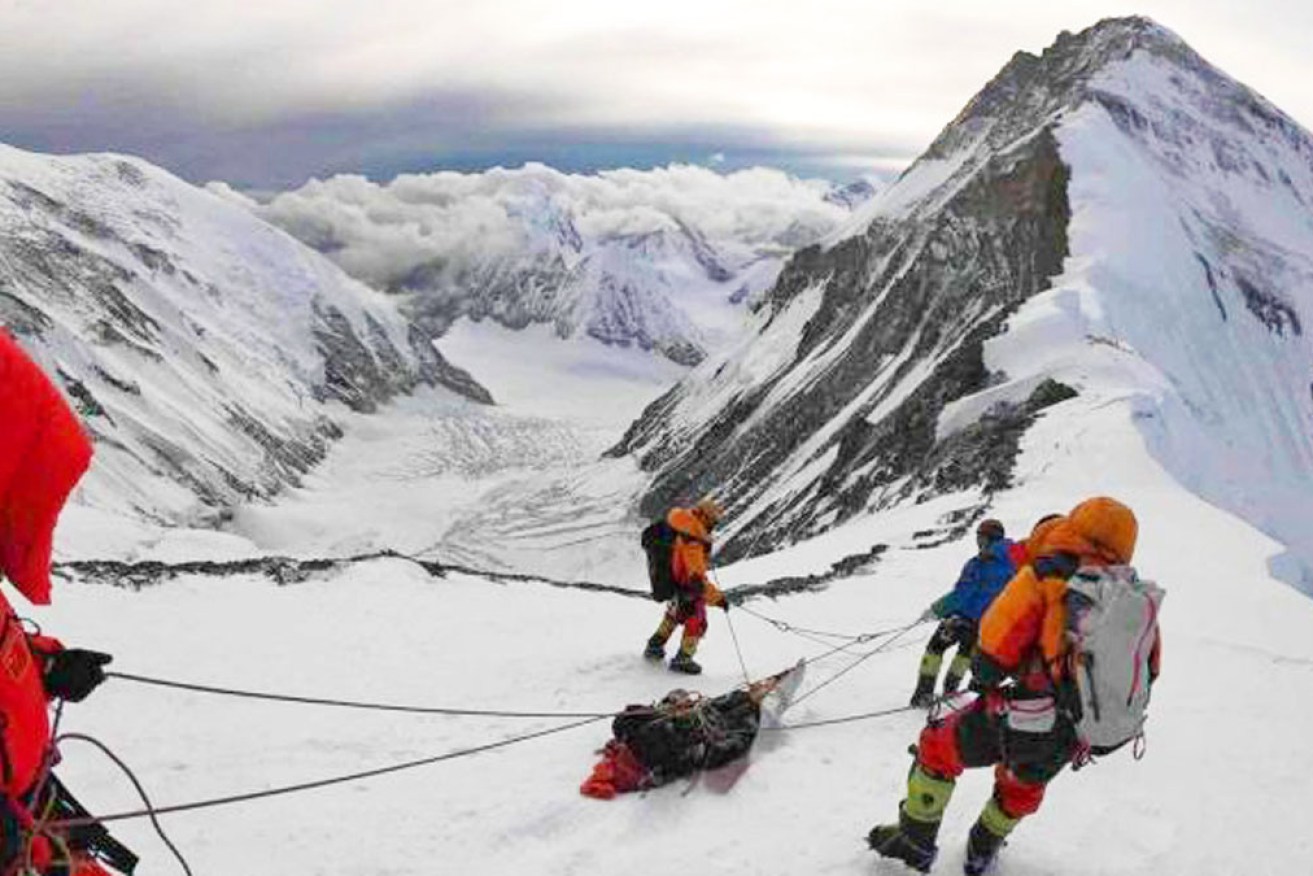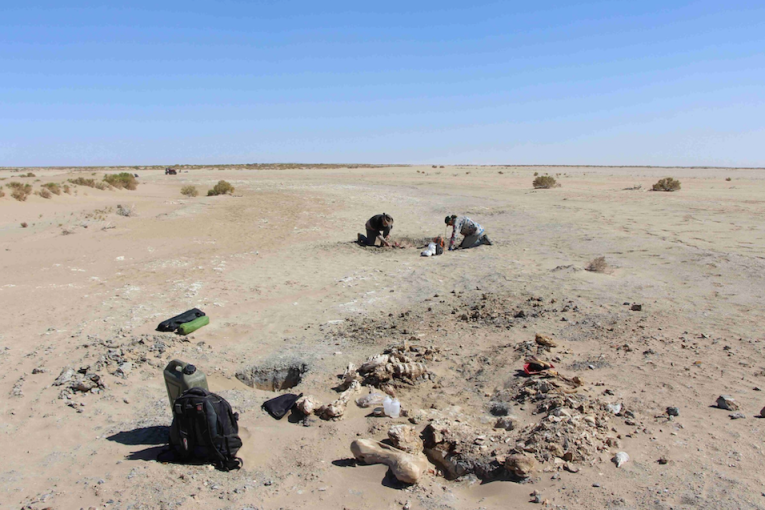Mount Everest deadly congestion: Nepal blames inexperienced climbers, won’t limit permits


An Australian man was taken to hospital and is currently in a stable condition. Photo: China Daily
Climbers are risking death at jammed-up narrow peaks of Mount Everest as tourism officials open up the mountain to an unprecedented number of trekking permits, igniting debate over the regulation of the adventure industry in Nepal.
While once scaling the mountain was a dream only the well-heeled and highly experienced could ever hope to come true, the rise of cheaper expeditions and more and more tour companies has made the dangerous pursuit possible for hobbyists and adventure seekers.
It’s believed congestion during the climb has contributed to the highest death toll in four years, with Kathmandu media reporting that in one day last week there was 250 climbers on the mountain.
So far 11 people have died this year on the slopes. Two of the deaths were on the Tibetan side of the mountain, compared with nine on the Nepal side.
It’s raised questions about whether Nepal’s regulations are strict enough, with some seasoned climbers saying it’s too easy for tourists to hire a local trekking guide without the proper checks on the climber’s fitness and experience.
In a poor country like Nepal, tourists mean life-changing cash for locals. And for many visitors, the Himalayas are the main attraction.
This year, 381 people – in 44 teams – have been permitted to take on the climb, which the government confirmed was the highest number ever. Each person is accompanied by a Sherpa (local guide).
Crowded peaks is only one problem of the regulation of the ascent.
Nepal also does not require permit applicants to prove their ability to maintain fitness at high altitudes, with climbers only needing to show a doctor’s certificate.
There is also no rules on when groups depart base camp and the pace of those departures. Instead, the government leaves it up to guides and tour companies, who usually make the most of small windows of clear conditions.
Nepal considers background checks on climbers
On Wednesday, as the country marked the anniversary of the first successful climb of Edmund Hillary and Tenzing Norgay in 1953, officials said they had no plans to limit permits.
Renowned mountaineer Um Hong-gil of South Korea, who was honoured by the Nepal government at the commemorative event, said the number of climbers should be scaled back and only those with proper training and experience should be allowed.
But government minister Gokul Prasad Baskota said the congestion on Everest wasn’t due to the mismanagement of permits but rather the inadequate training of some climbers.
Officials suggested the government would consider tightening the rules on background checks, requiring climbers to submit documentation to prove their mountaineering experience as well as health and fitness.

Climbers queue to reach the summit of the world’s highest mountain.
Timing peak danger
On Mount Everest, timing is everything to make the most of clear weather and conserve oxygen.
Every minute is crucial at the final push from Camp Four at 8000 metres to the peak at 8850 metres – a section known as the “death zone”.
Because of the altitude, climbers have just hours to reach the top before they are at risk of a pulmonary oedema, when the lungs fill with liquid.
But with the growing number of permits comes greater risk of crowding and bottlenecks – and more exposure to the elements for sherpas and their teams.
American Eric Murphy climbed Everest for the third time on May 23.
He said what should have taken 12 hours took 17 hours because of struggling climbers who were clearly exhausted but had no one to guide or help them.
“Every minute counts there,” Mr Murphy said.
The conditions are so intense at times that, when a person dies, no one can afford to expend energy on carrying the body back down.
At least four of 11 recent deaths have been linked to the traffic jams at the “death zone”.
The deaths this year on Nepal’s side of the mountain included Don Cash, a sales executive from Utah, and Christopher Kulish, an attorney from Colorado, who both died on their way down from the peak.
Irishman Seamus Lawless became the 11th climber to die in the past 10 days.
It was reported he sent his pregnant wife a text message to say he had made it to the top. He died after falling during his descent.
British climber, Robin Haynes Fisher collapsed and died on Sunday morning at an altitude of 8600 metres, about 150 metres below the summit.
A week before, the 41-year-old said he was “hopeful” to have avoided “the crowds on summit day”.
“With a single route to the summit, delays caused by overcrowding could prove fatal so I am hopeful my decision to go for the 25th will mean fewer people. Unless of course everyone else plays the same waiting game,” he wrote in an Instagram post.

Sherpas used a yak to rescue exhausted Canberra man Gilian Lee after he lost consciousness trekking Mt Everest. Photo: ABC
Australian climber in battles for his life
Australian Gilian Lee remained in a Kathmandu hospital on Wednesday after falling unconscious during his Everest climb.
Mr Lee, from Canberra, has had ambitions to climb 14 mountains higher than 8000 metres without oxygen tanks.

Gilian Lee’s Twitter posts documented his challenges.
He had been blogging about his experiences as well as keeping fellow mountaineers, friends and family updated through regular Facebook and Twitter posts during his climb.
“I am just an average person chasing a long-term dream. Rather than sitting around dreaming about it, I have started trying to achieve this mountaineering challenge,” Mr Lee wrote on his blog.
“Maybe I will succeed, maybe not, but it’ll be fun, and painful, to try to pursue this.”

Canberra man Gilian Lee was rescued from Mt Everest on his fourth attempt. Photo: ABC
-with agencies








